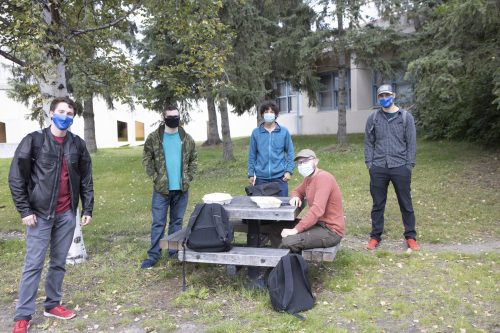Fairbanks campus logs increase in new student enrollment
October 16, 2020
Marmian Grimes
907-474-7902
 Fall 2020 new student enrollment at the University of Alaska Fairbanks Troth Yeddha’
campus in Fairbanks grew by nearly 7%, according to fall semester data finalized earlier
this month.
Fall 2020 new student enrollment at the University of Alaska Fairbanks Troth Yeddha’
campus in Fairbanks grew by nearly 7%, according to fall semester data finalized earlier
this month.The increase is in contrast to an overall enrollment decline of about 5% at all UAF campuses and flat enrollment at the Fairbanks campus this fall.
“We were concerned about our fall enrollment, given the unprecedented number of obstacles our students are facing this year when making their choice about college,” said Samara Taber, acting associate vice chancellor for enrollment management. “I think the increase in new student enrollment reflects the work of our strategic enrollment plan, our recruitment team and the success of our new enrollment initiatives, such as the Nanook Pledge scholarship.”
UAF tracks weekly enrollment at all of its campuses during the early part of each semester. Once the deadline for students to add or drop courses has passed, UAF’s institutional research team creates the final enrollment report, which is generally available in October and February. That report includes total enrollment data, as well as enrollment data for of specific groups of students and specific programs and locations.
New student data shows an increase of 3.4% in new undergraduates and 4.1% in new first-year students at the Fairbanks campus and a jump of more than 21% in new graduate students. Among the schools and colleges, the School of Management’s new undergraduate enrollment increased by nearly 54%.
While overall UAF enrollment declined, several programs saw increases. The School of Education recorded a jump of 8.8% in overall enrollment. The College of Fisheries and Ocean Sciences was up by nearly 5%. Most other schools and colleges showed flat to slightly decreased enrollment for the fall semester.
Among the rural campuses, the Kuskokwim Campus in Bethel and the Northwest Campus in Nome recorded enrollment increases of 14.7% and 15.9%, respectively. Because of their smaller student body, enrollment at rural campuses can fluctuate greatly semester-to-semester, due to things like one-time or cohort-based programs.
UAF also collects demographic data about each incoming class. Among the 1, 175 new students who responded to the optional survey, about 37% are first-generation college students and about 23% are military-affiliated. Nearly 8% identified themselves as both first-generation and military affiliated. Nearly 19% are Alaska Native, 6% are Asian, 4.5% are Black, 7% are Hispanic and nearly 59% are white.
NOTE TO EDITORS: To see all fall 2020 enrollment reports, visit the UAF press download folder at http://bit.ly/uaf-press-download. Historical enrollment data is also available at https://uaf.edu/pair/datasets/enrollment-reports/index.php.


